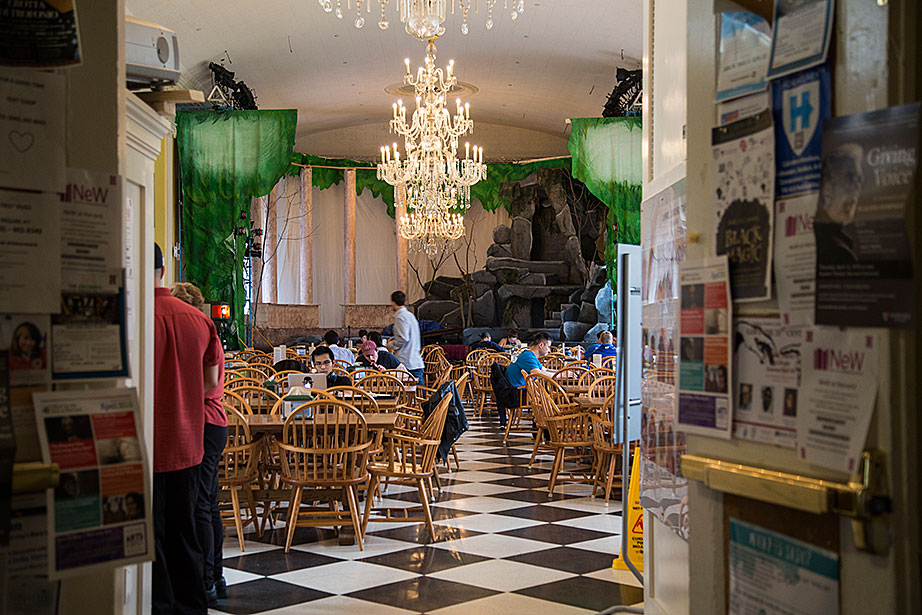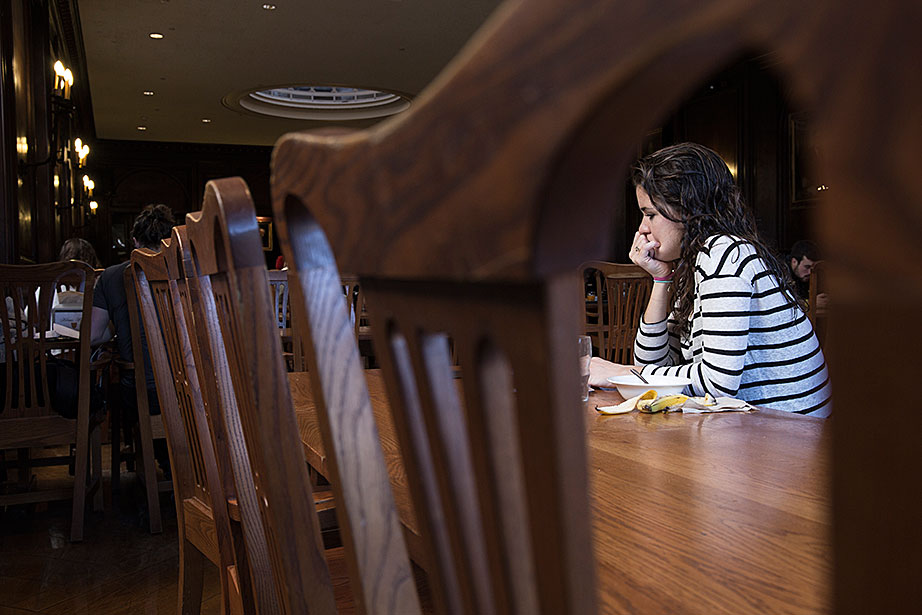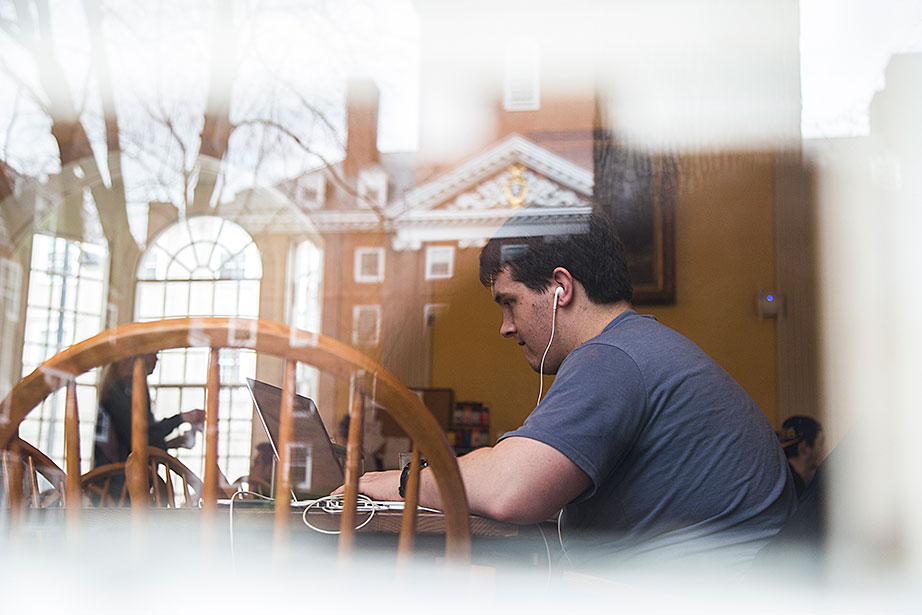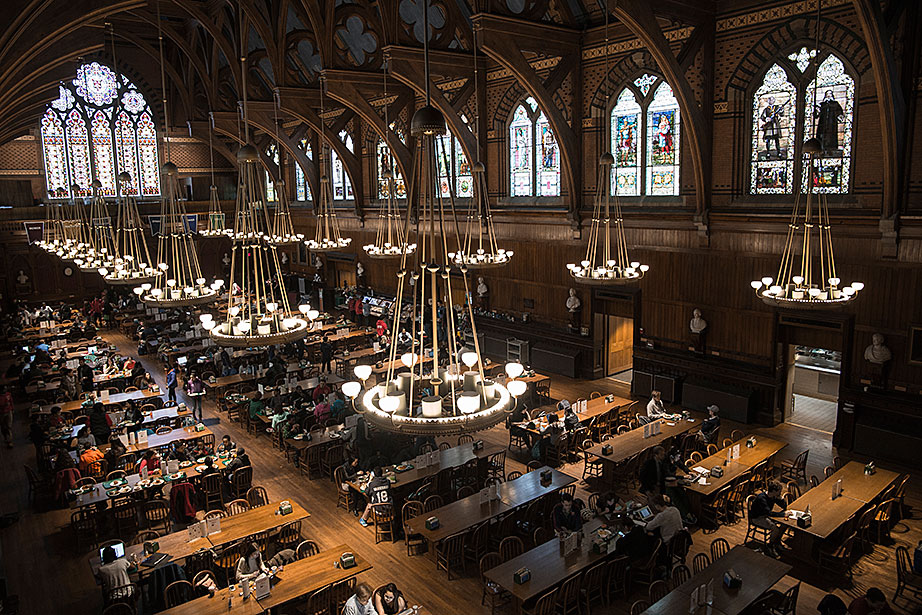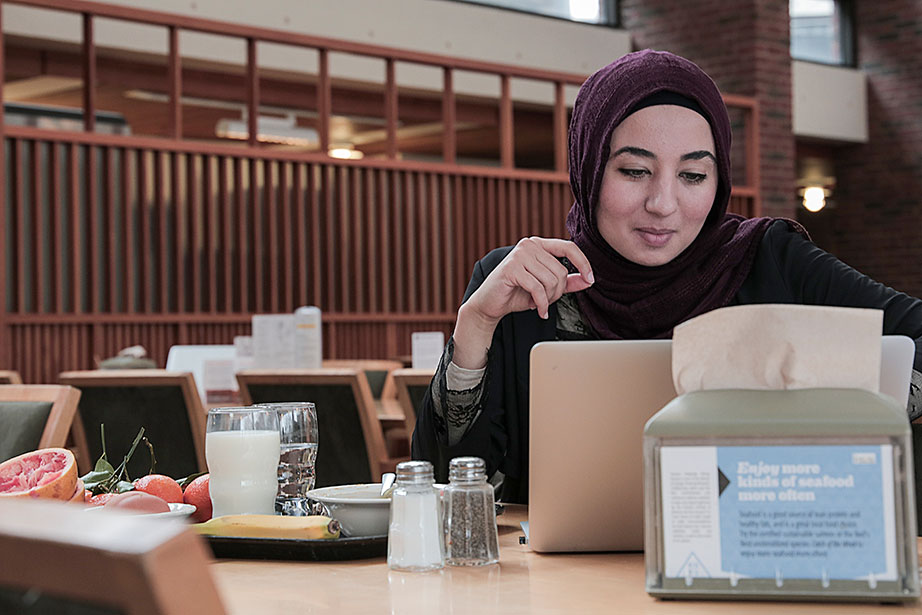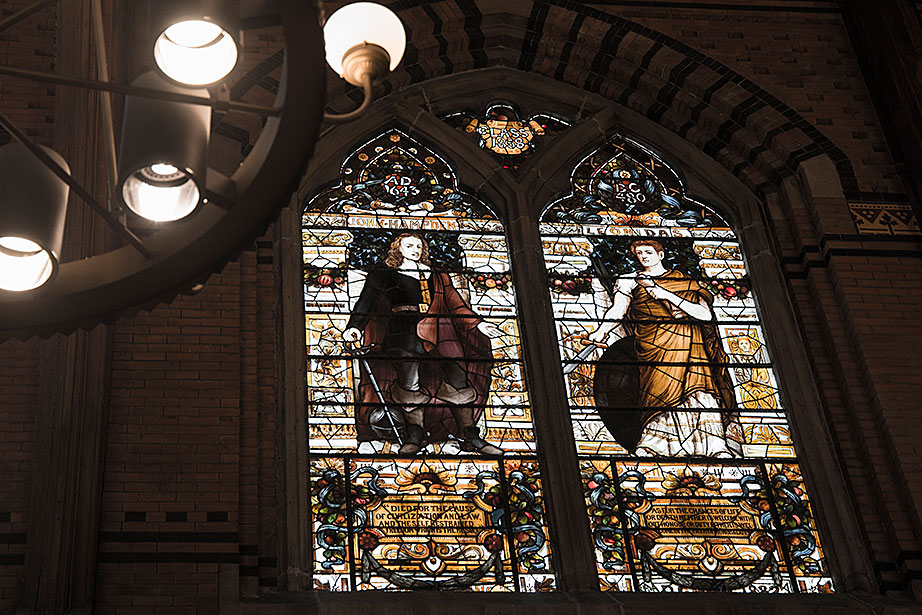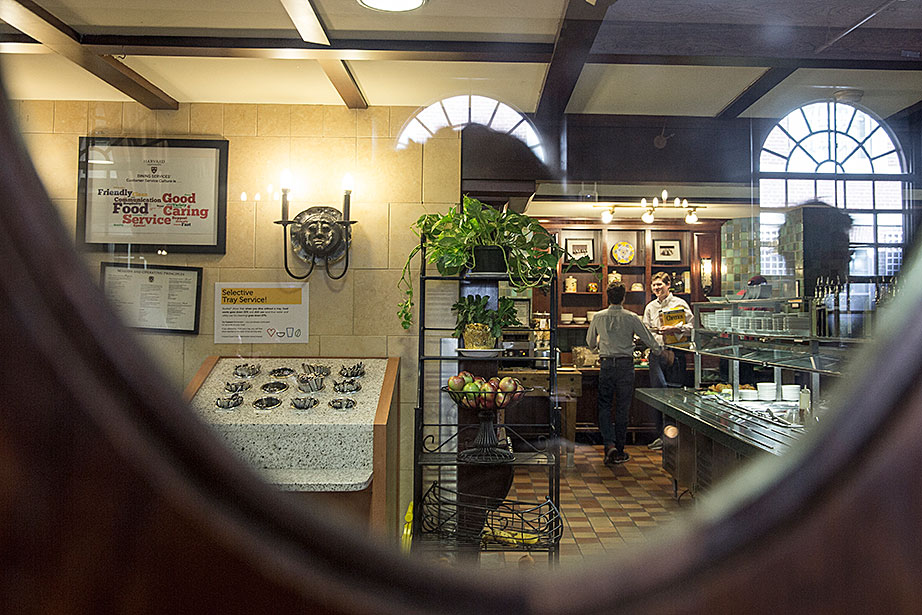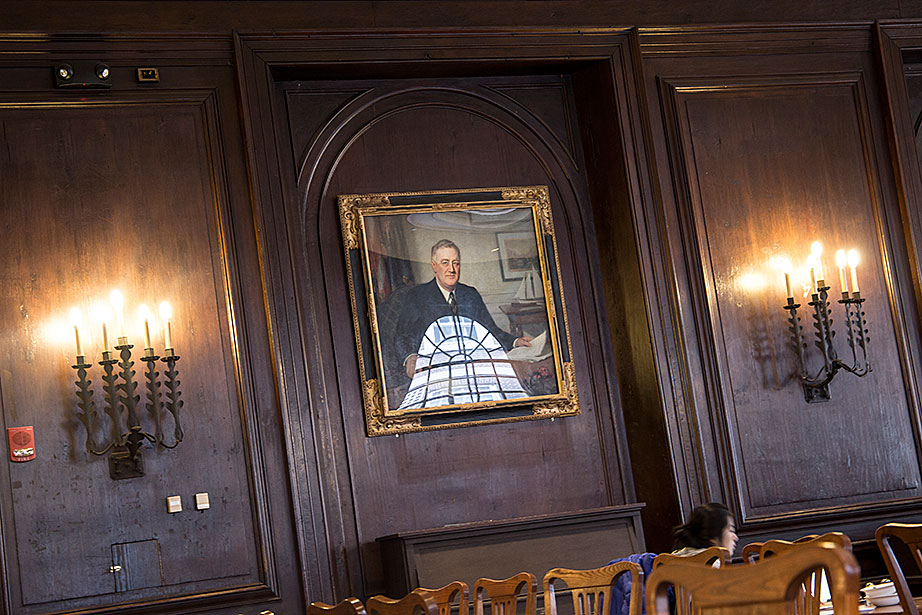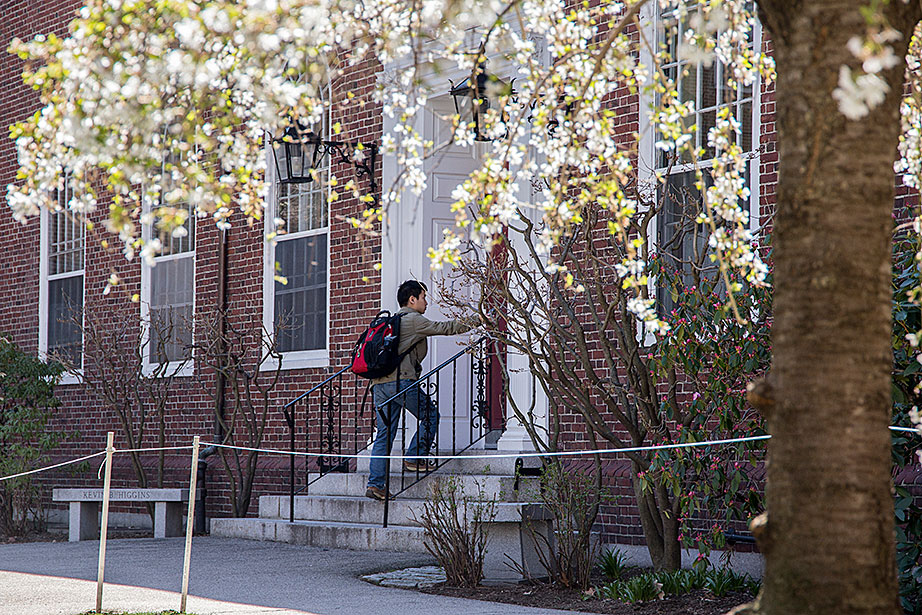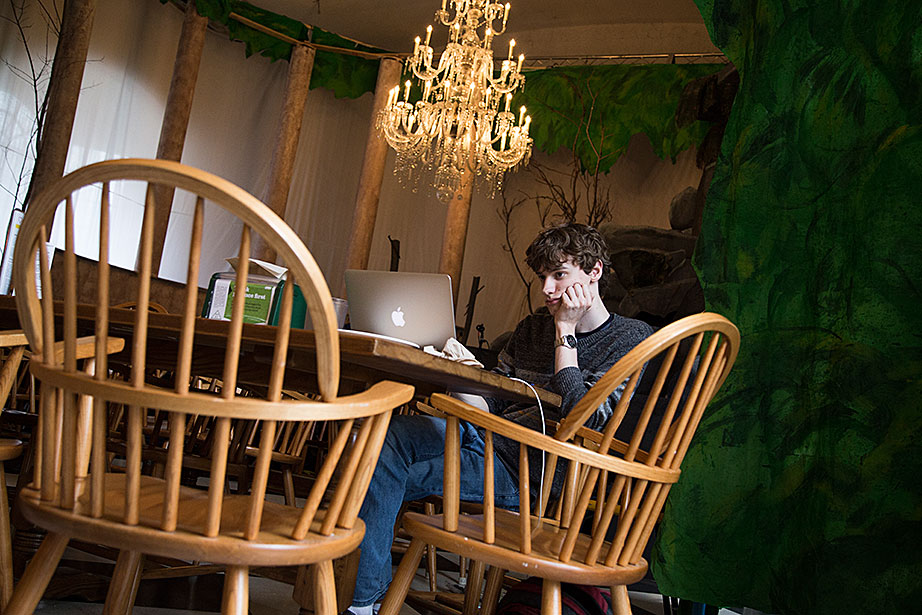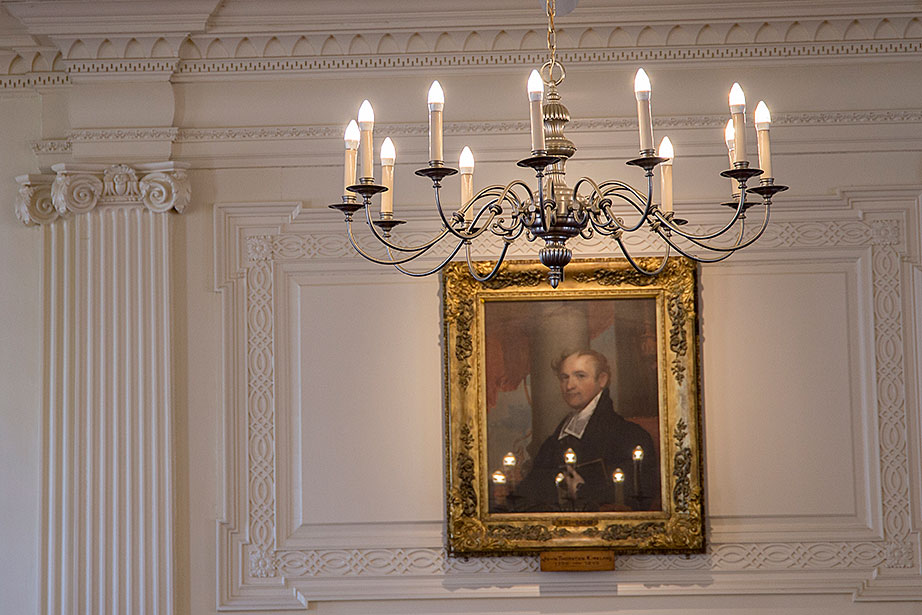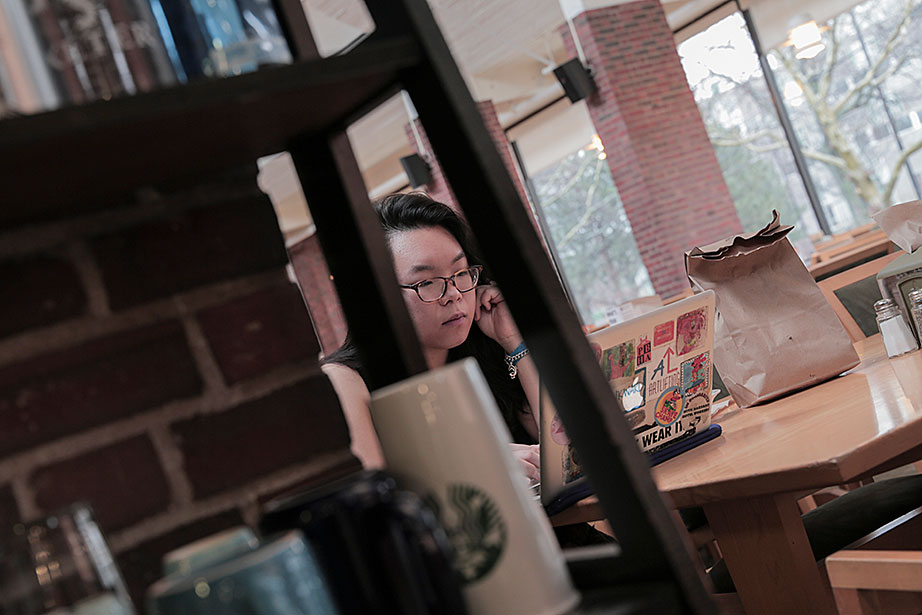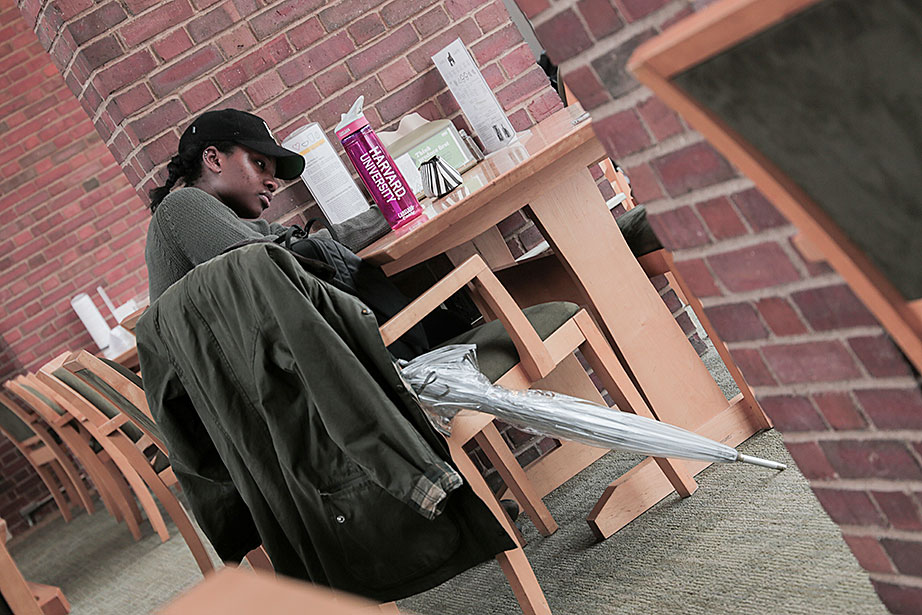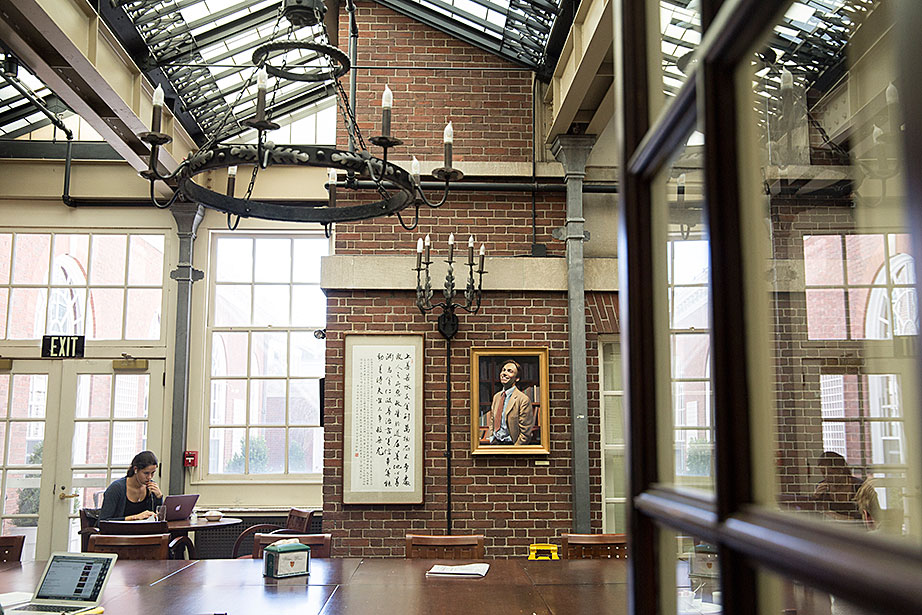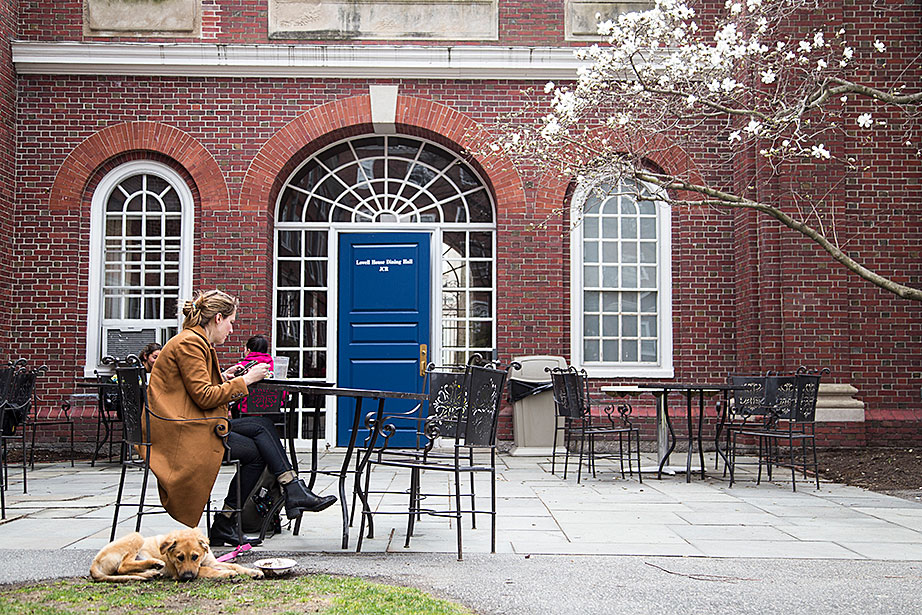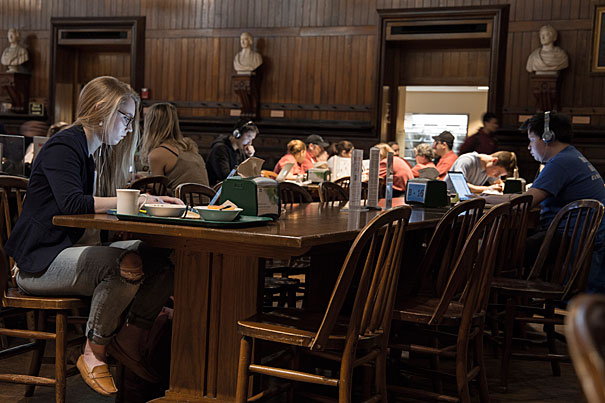
Amelia Lamp ’19 studying at the Annenberg dining hall, Harvard University. Photo by Shraddha Gupta
Photos by Shraddha Gupta
Food for thought
More than meals attract students to Harvard’s varied dining halls
The dining halls inside Harvard College’s 12 undergraduate residential Houses not only feed students at mealtimes but also become their comfort spots, places they can call home outside their dorm rooms.
Each dining hall has its own decor and charm. The grandest is Annenberg Hall — not just a treat just for freshmen — with dim lighting that lends an aura of medieval wizardry. There are high wooden walls, an elaborately carved ceiling, golden chandeliers, stained-glass windows, and portraits and statues lining the walls.
Decidedly different is the Kirkland House dining hall, a beautifully lit room full of friendly faces. “Kirkland’s dining hall is the nexus of all that happens in the House,” said Kate Drizos Cavell, the House administrator.
“It’s rare that one single place can be so many things at once for so many people: an office, a study space, a meeting place, a lounge, a dining room, and most of all, a home,” Cavell said.
The dining hall of Mather House is one of the most modern-looking, with brick walls and tall glass windows that look out on the Charles River.
Jing Qiu ’16 said, “You can see the sunset from the glass wall, and when it’s the Regatta on the Charles, most of us just sit and watch it from here in our pajamas.”
In the spring, Lowell House’s dining hall overlooks blooming flowers and trees leafing out.
“Our dining hall is the emotional and architectural heart of the House community,” said Elizabeth G. Terry, the House administrator. “Whether taking a seat at the traditional high table, watching the annual opera production, working out a P-set late into the night, or having supper with friends, its neoclassical beauty is exceeded only by its consummate utility.”
Adams House also has plenty of architectural history and cultural relevance to its community. With its bountiful light and lovely flooring, the dining hall is a striking combination of structure and function.
“It seems amazing to us now that they didn’t allow cellphones in here when they first came out, and people didn’t sit around much. It was a communal place where people could eat and meet,” said John G. “Sean” Palfrey ’67, a faculty dean of Adams House.
“But it has changed drastically in color and character over the years, and people are in here now more often, all the way through the night until the morning, and then the morning people come in.”
